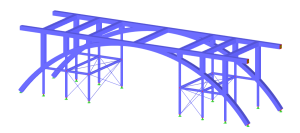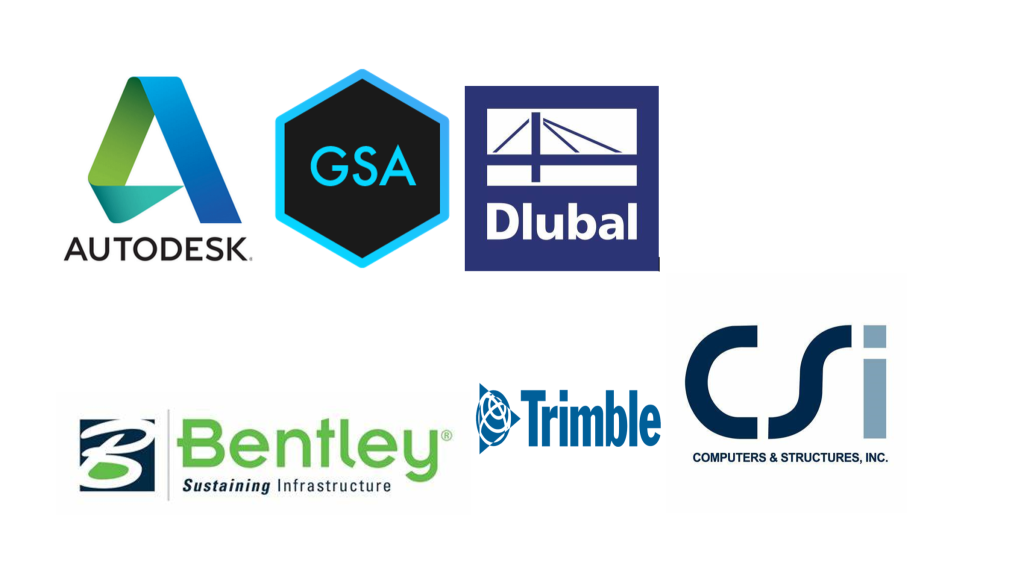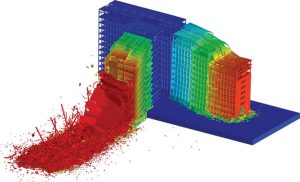Opening — why the right software matters
Choosing the right structural design package is a decision that affects accuracy, delivery time, project cost and long-term competitiveness. The “best” tool depends on what you design (buildings vs bridges vs steel connections), the stage of work (conceptual vs detailed), the team’s skillset, and how tightly the software integrates with CAD/BIM workflows. Below I compare the leading contenders (SAP2000, ETABS, STAAD.Pro, RFEM, and Tekla), explain where each shines (concrete / steel / timber), cover cloud platforms and interoperability, and finish with a practical buying guide and training paths.
Top contenders — quick snapshot
SAP2000 (CSI)
— general-purpose structural analysis & design with powerful meshing/FEM and scripting/API. Strong for complex analyses, bridges and bespoke structures. Latest releases in 2025 continue to strengthen API and model handling. Computers and Structures, Inc.
ETABS (CSI)
— industry-standard for multi-storey building analysis and reinforced concrete design; integrated models, slab/wall design and strong code implementations for building codes. Ideal when buildings are the main deliverable. Computers and Structures, Inc.
STAAD.Pro (Bentley)
— long-time general-purpose solution with broad code coverage and industry integrations; keeps evolving in 2025 to modernize analysis workflows. Bentley Systems+1
RFEM (Dlubal)
— modern FEM platform with excellent shell/plate/solid meshing and intuitive UI; strong for detailed 3D steel and complex geometry modelling.
Tekla Structures (Trimble)
— a modelling and detailing powerhouse (BIM-focused) — best-in-class for steel detailing, connections and constructible models; Tekla Model Sharing gives cloud collaboration for large teams. Tekla Support
(Note: specialized tools—Midas, ANSYS, IDEA StatiCa, RISA, SkyCiv—also deserve attention for specific tasks or budgets.) SkyCiv Structural Analysis Software+1
Evaluation criteria (applied consistently)
- Accuracy & numerical robustness — quality of solvers, element formulations, nonlinear capability.
- Usability & learning curve — UI, workflows, scripting/API access.
- Ecosystem & interoperability — BIM/CAD connectors (Revit, IFC, DWG), plugin availability.
- Support & documentation — manuals, local resellers, community, updates.
- Price / licensing model — total cost of ownership (perpetual vs subscription, cloud pay-as-you-go).
- Performance & benchmarking — how the package scales with model size and complexity.
Best for concrete vs steel vs timber
Concrete (RC / post-tension)
- ETABS is the leader for multi-storey RC buildings: integrated slab, shear wall and frame design tools, automated code checks and rebar schedules. Best when your project is a building and you need tight integration between analysis and design output. Computers and Structures, Inc.
- SAP2000 handles complex RC forms and non-building structures well (bridges, tanks) thanks to flexible meshing and extensive element types. Good when a structure mixes systems or requires advanced dynamic analysis. Computers and Structures, Inc.
- RFEM excels in detailed plate/shell modelling for complex slab systems and finite-element-based checks.
Steel
- Tekla Structures for detailed steel modelling, fabrication drawings and connection-level detailing — it’s effectively the industry standard for constructible steel BIM. Tekla Support
- STAAD.Pro and SAP2000 are strong for frame analysis and code-based steel design; choose STAAD when you require broad code coverage or legacy workflows. Bentley Systems+1
- IDEA StatiCa (not in the top 5 list but commonly used) is widely used for connection checks alongside general analysis tools.
Timber / timber-engineered systems
- RFEM and SkyCiv provide wood/timber design modules and code checks—SkyCiv’s cloud model is particularly accessible for smaller firms or startups. SkyCiv Structural Analysis Software+1
Best for education & startups
- SkyCiv (cloud-first) and RFEM (student licenses) — both have accessible pricing and learning resources. SkyCiv’s subscription and browser-based model makes it friendly for education, remote teams and startups that want low upfront cost and instant updates. SkyCiv Structural Analysis Software+1
- CSI’s student/academic licenses for SAP2000/ETABS are commonly used in universities, giving students exposure to industry-standard tools. Computers and Structures, Inc.+1
Cloud / online structural platforms
Cloud platforms split into two flavours: cloud-hosted desktop (software runs on a remote machine you access) and native web apps (browser-only, server-run FEM).
- SkyCiv Structural 3D — native web app for modelling, analysis and design checks with subscription pricing; no install, easy team sharing. Good for quick projects, education, and firms that prefer OPEX over CAPEX. SkyCiv Structural Analysis Software+1
- Tekla Model Sharing (cloud collaboration) helps distributed teams coordinate large models — Tekla remains desktop-first but tightly integrates cloud sharing. Tekla Support
- Many traditional packages (STAAD, SAP2000) now offer cloud-enhanced workflows—remote execution, model sharing or cloud licensing—so it’s increasingly easy to pair a heavy-duty desktop solver with cloud storage and collaboration.
Interoperability with CAD/BIM (IFC, Revit, DWG)
Interoperability is non-negotiable for consultants working in multi-discipline BIM workflows:
- Revit ↔ Robot / ETABS / SAP2000 — Revit analytical and physical model exchange is supported via direct exporters or plugins; Robot and other Autodesk tools still provide IFC/import routes for analytical models. IFC handling has improved but requires careful modeling discipline. Autodesk+1
- Tekla outputs highly constructible models (native Tekla format + IFC + link to Revit) and is the best bet when the downstream deliverable is fabrication and erection documentation. Tekla Support
- DWG/DXF remain baseline exchange formats for 2D drawings; most packages export DXF/DWG and schedule reports, but richer data needs IFC or native connectors.
Licensing models: perpetual vs subscription
- Perpetual licenses: heavy upfront cost, lower long-term cost for long use, but higher initial CAPEX and often require paid maintenance for updates. Historically common with STAAD and some Dlubal/CSI options.
- Subscription (term licenses): growing dominant model — predictable OPEX, includes updates and cloud features. SkyCiv, Autodesk (Robot historically part of suites), Tekla (subscriptions and cloud services) lean this way. For startups and short-term projects, subscription often wins on cashflow. SkyCiv Structural Analysis Software+1
Benchmark tests and performance metrics
When choosing software, benchmark against real-world tasks your firm does:
- Model scale: number of nodes/elements before solve time becomes unacceptable.
- Solver robustness: convergence behaviour for nonlinear/contact/time-history analysis.
- Memory footprint: RAM required for peak models — important on laptop vs workstation.
- Interoperability time: time to import/export to Revit/IFC and clean up geometry.
- Automation throughput: how long it takes to run a parametric study via API or batch runs.
Performance varies: CSI’s SAP2000/ETABS are optimized for building/bridge workflows and large modal analyses; RFEM is competitive for dense shell/solid meshes; cloud-native SkyCiv offers fast provisioning but finite by server-class compute limits. Use vendor trial licenses and run two or three of your firm’s past projects as benchmarks.

Feature comparison (concise table)
| Feature / Tool | SAP2000 | ETABS | STAAD.Pro | RFEM | Tekla Structures |
| Primary focus | General/bridges/complex | Buildings (multi-storey) | General/legacy workflows | FEM shells/solids | BIM / steel detailing |
| Analysis types | Linear, nonlinear, dynamic, time-history | Building dynamics, P-Delta, slab/wall FEM | Linear, nonlinear, buckling | Advanced FEM, solids, contact | Model-based constructability |
| Code-based design | Yes (many codes) | Extensive building codes & slab/wall design | Very broad code library | Multiple codes via modules | Limited structural design — focuses on detailing |
| Reporting & schedules | Good, scriptable | Excellent (rebar, slabs, walls) | Good | Good, flexible | Excellent for fabrication drawings |
| BIM / Revit / IFC | Connectors + API | Strong Revit/IFC workflows | Revit link, IFC | IFC export/import | Native BIM; Tekla <-> Revit workflows |
| API / automation | Yes (extensive) | Yes | Yes | Yes | Yes (Open API) |
| Cloud options | Partial/cloud features | Partial/cloud features | Cloud features emerging | Desktop-first | Model sharing/cloud collaboration |
| Best for | Complex structures, bridges | Multi-storey RC/steel buildings | Broad infrastructure & code needs | Complex FEM problems | Steel fabrication & erection |
(This table is a high-level summary — always validate against vendor docs for specific design-code support and local regulations.)
Buying guide — match software to project types
- Small consultancy / education / startups: consider SkyCiv or cloud subscriptions. Low cost, quick onboarding, ideal for simple to medium models. SkyCiv Structural Analysis Software+1
- Building design firm (multi-storey concrete/steel): prioritize ETABS for analysis/design and Revit + Tekla for BIM-based documentation. ETABS speeds up reinforced concrete design workflows. Computers and Structures, Inc.+1
- Heavy civil / bridges / complex non-building structures: SAP2000 or Midas for advanced dynamic & bridge modules. SAP2000’s solver and API are strong for bespoke workflows. Computers and Structures, Inc.
- Detailed steel fabrication & erection: Tekla Structures — best for producing fabrication-ready models and coordinating with fabricators. Tekla Support
- FEM-heavy research/design: RFEM or ANSYS for advanced shell/solid modelling and complex material behaviour.
Training resources and certification paths
- Vendor training: CSI (SAP2000/ETABS) and Trimble (Tekla) offer official training courses and certification — great for quality assurance and client confidence. Computers and Structures, Inc.+2Computers and Structures, Inc.+2
- Online courses / MOOCs: many universities and training providers run instructor-led and self-paced courses (Revit+Robot, Tekla fundamentals, STAAD basics).
- YouTube & community forums: practical tutorials, common workflows, and troubleshooting. For specialized modules (post-tensioning, time-history), vendor docs + example files are essential.
- Certification advantage: certified staff increase credibility on proposals (e.g., “ETABS certified” or “Tekla certified modeler”) — often worthwhile for mid-to-large consultancies.
Roadmap & emerging tools in 2025
Key trends shaping structural software in 2025:
- Cloud collaboration & hybrid workflows — desktop solvers paired with cloud model-sharing and storage (Tekla Model Sharing is a good example). Tekla Support
- Browser-native FEM tools — SkyCiv and similar platforms remove installation friction and lower cost-of-entry. SkyCiv Structural Analysis Software
- AI-assisted modelling — automated load-path detection, code-check suggestion, and design optimization (generative design) are appearing as plugins and research tools. Expect more automated compliance checking and connection design assistance in the next 1–3 years.
- Better IFC fidelity — IFC exchange is improving but still demands modelling discipline; vendors are enhancing import/export features to reduce manual cleanup. Autodesk+1
- Smoother integration between analysis and fabrication — bridging the gap from analysis model to fabrication model (parametric connections, automated shop drawings) will continue to mature, driven by Tekla-style workflows.
Practical next steps — how to evaluate and buy (checklist)
- Define your project mix: buildings, bridges, industrial, or mixed?
- Run a 2–3 project pilot: use vendor trials to import an actual past project and time the modelling, solve, design and output phases.
- Measure TCO: license costs, training, hardware, and expected maintenance. Consider subscription for cashflow flexibility. SkyCiv Structural Analysis Software
- Check interoperability: export a Revit/IFC file and confirm round-trip fidelity. Ensure schedules and rebar lists meet your documentation standards. Autodesk Help+1
- Assess support: local reseller availability, SLA, community forums and knowledge base.
- Plan training & templates: immediate productivity gains come from process templates, standard load libraries and staff training.
Final recommendations (short)
- If your firm focuses on multi-storey buildings (concrete + steel): ETABS + Revit + Tekla (for fabrication) is a proven stack. Computers and Structures, Inc.+1
- If you handle complex non-building structures or bridges: SAP2000 for analysis paired with a detailing tool as needed. Computers and Structures, Inc.
- If you’re a small firm or startup prioritizing cost and speed: explore cloud-native SkyCiv or subscription plans from RFEM/others. SkyCiv Structural Analysis Software+1




